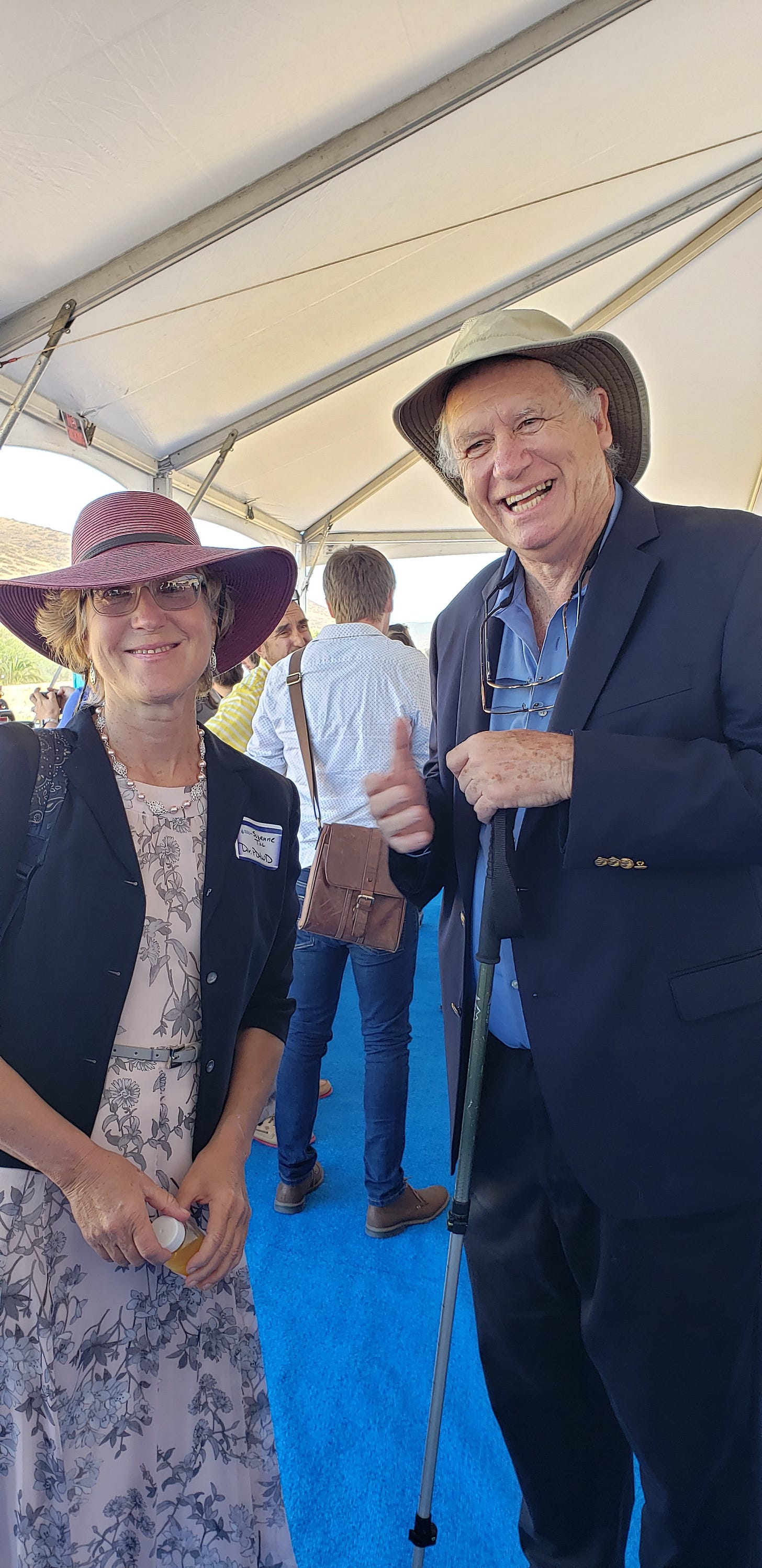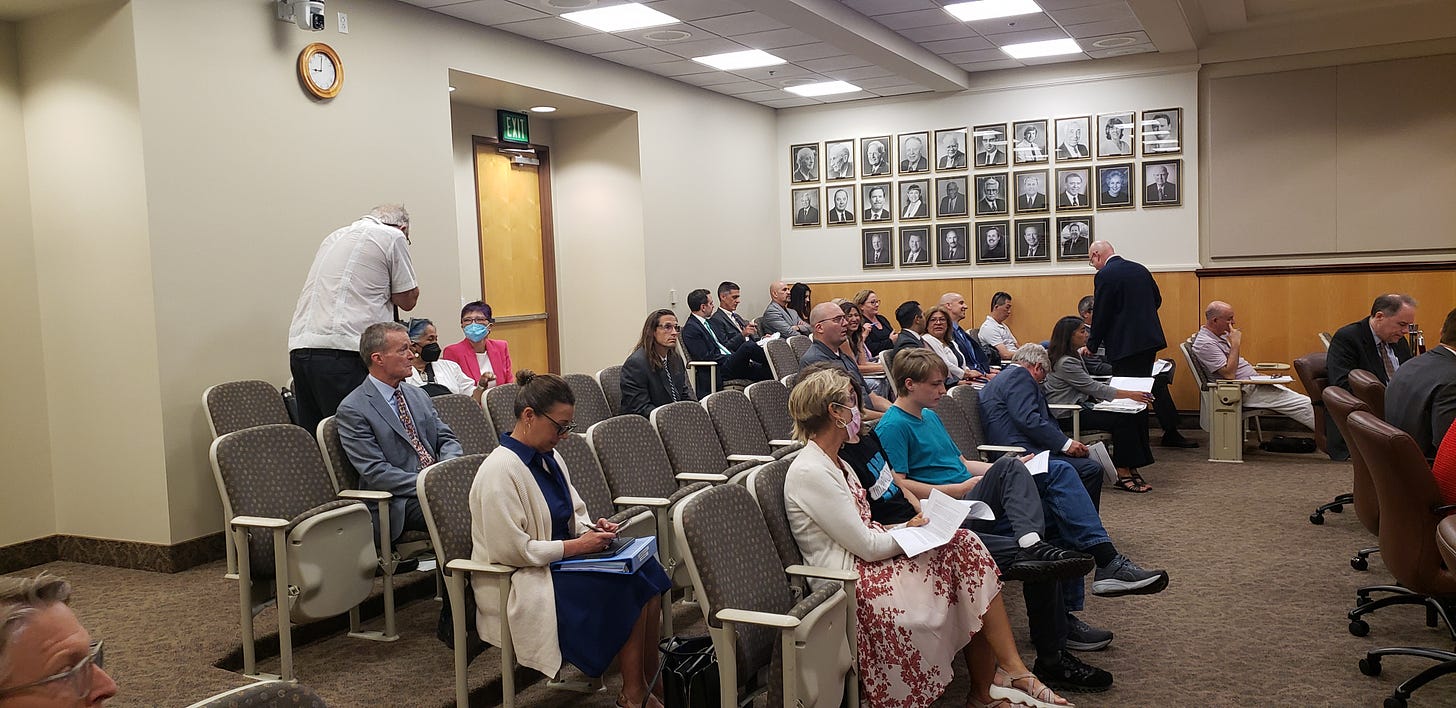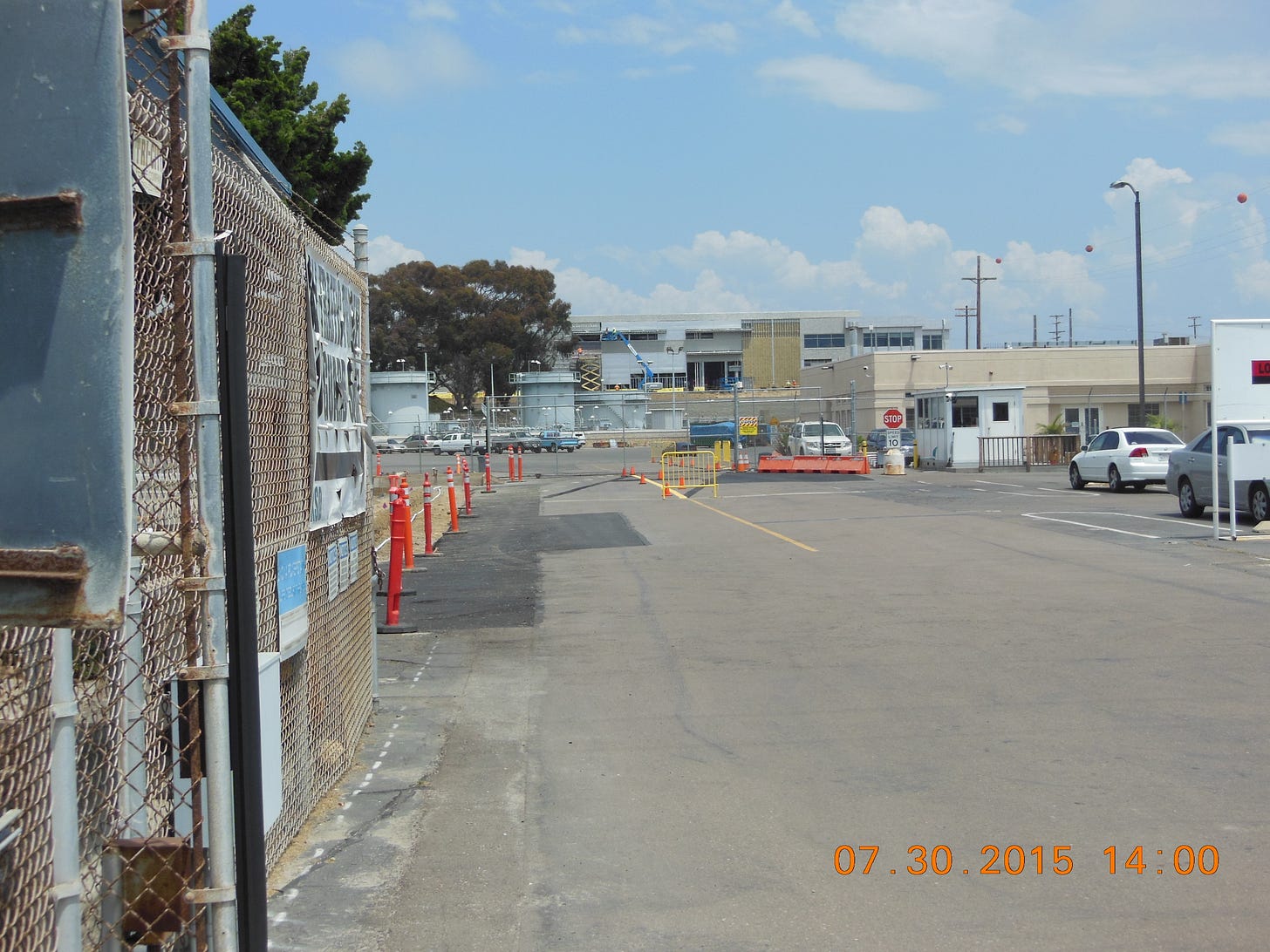How can we get rid of the Carlsbad ocean desalination plant?
It has become a $1.3 billion financial albatross for the San Diego County Water Authority
Yesterday, July 25, the San Diego County Water Authority (CWA) Board of Directors voted for a 14% wholesale rate increase effective in 2025 for the wholesaler’s 23 local water agencies, to be followed by a 16.4% increase in 2026 plus 5.6% in 2027 (40.1 percent compounded).
The increase is part of an unstoppable trend in county water management caused by CWA’s high debts and declining water use, resulting in less revenue for paying those debts—over $2 billion worth.
The longer CWA delays paying its debts due to lack of revenues the more its credit rating declines, potentially adding tens of millions of dollars in debt in coming years.
A major cause of CWA’s financial troubles is its failure to recognize conservation and wastewater purification as the preferred water-reliability alternatives while zealously over projecting its supply needs in an era of severe climate change.

The least needed tool inside CWA’s water-reliability portfolio, many water buffalos now believe, is the $1.3 billion Claude "Bud" Lewis Carlsbad [ocean] Desalination Plant, previously invented and owned by Poseidon Water.
Poseidon got the plant running, sort of, in 2015 and produces up to 48,000/AF of drinkable water a year (when fully operable) at a ridiculously high cost, soon to be $4,000/AF, almost four times the cost of imported water and over twice the cost of recycled wastewater.
To lower staff’s originally projected 18% rate increase, the board voted to cut $2 million from the operational budget and postpone aqueduct repairs—saving another $7 million—for now—by “kicking the can down the road,” as some board members love to derisively say.
In order to limit the rate increase, CWA will also divert a $19 million federal grant intended for a mandatory upgrade of the desal plant’s intake system to other budget areas. The grant will help pay the agency’s $77.5 million cost share for the $220 million project. Channelside will pay the rest of the difference.
That funds transfer would be a temporary benefit—another kicking the can down the road. Because at some point the $19 million will have to be pulled back to finish the upgrade without which the plant would close and CWA would be on the hook for $1.3 billion.
Which might be a good idea, because after 10 years of true love CWA’s binding 30-year take-or-pay marriage with Poseidon (now Channelside) has become a big albatross around its neck.
These days, talk of abandoning or rolling off the Carlsbad desalination plant is growing among water board directors in public and closed-door meetings.
“The problem is,” one local water director told me, “the Authority can’t face reality. They need to stop borrowing money.”
“We realize cost increases are hard to swallow,” CWA’s general manager Dan Denham said in a press release. “And we are doing everything possible to combate rate inflation now and in the future. Our efforts include cutting expenses, deferring projects and purchases, selling surplus water, and seeking additional grant funds to boost income.”
Suzanne Till, from Padre Dam Municipal Water District, speaking for herself, offered her solution to the board in public comments.
By Suzanne Till
My name is Suzanne Till. I am a director for Division 2, Padre Dam Municipal Water district. Today I am speaking as a private citizen of Santee.
The San Diego County Water Authority ‘s (CWA) water supplies from the Poseidon Carlsbad ocean desalination plant (subsequently sold to Channelside) and water transfers from Imperial Irrigation District are probably the most expensive developed water supplies in the State of California.
Since the inception of those projects, San Diego County ratepayers have used less and less water; yet, ratepayer water bills continue to increase. San Diego County ratepayers cannot “bail out” CWA’s business failures by paying double digit water rate increases year after year.
The most alarming CWA business transaction is the take or pay contract with for desalinated water produced at the Carlsbad desalination plant. This contract guarantees profits for Channelside’s private investors.
SDCWA’s proposed double digit water rate hikes will provide more profit for Channelside’s investors at the expense of the County’s water ratepayers. Channelside’s take-or-pay contract with CWA demonstrates how privatized water can breach the public trust of California’s coastal water resources.
CWA’s staff state that Channelside’s desalination water makes San Diego County drought proof. I ask the Board to consider the true costs of continuing the take-or-pay contract for that water, including increased greenhouse gas emissions, destruction of California’s marine life, and overpriced water.
However, there is affordable and environmentally responsible water reuse technology to make San Diego County drought proof: wastewater purification.
For example, starting in 2026, the Advanced Water Purification Project (AWP) will provide up to thirty percent of East County’s freshwater demand. East County AWP water costs less than Channelside’s desalinated water. East County AWP will not provide profit for offshore investors. It will not destroy marine life.
In addition, using biogas, a by product of water repurification, East County AWP can generate energy to power the purification process. IN East County we believe that water purification is the solution to drought.
I call upon the CWA board to end the imprudent, overpriced take-or-pay contract with the Channelside ocean desalination plant in Carlsbad. This one action would be a first step toward restoring the public’s trust in San Diego County Water Authority to provide reliable and affordable water to San Diego County.





